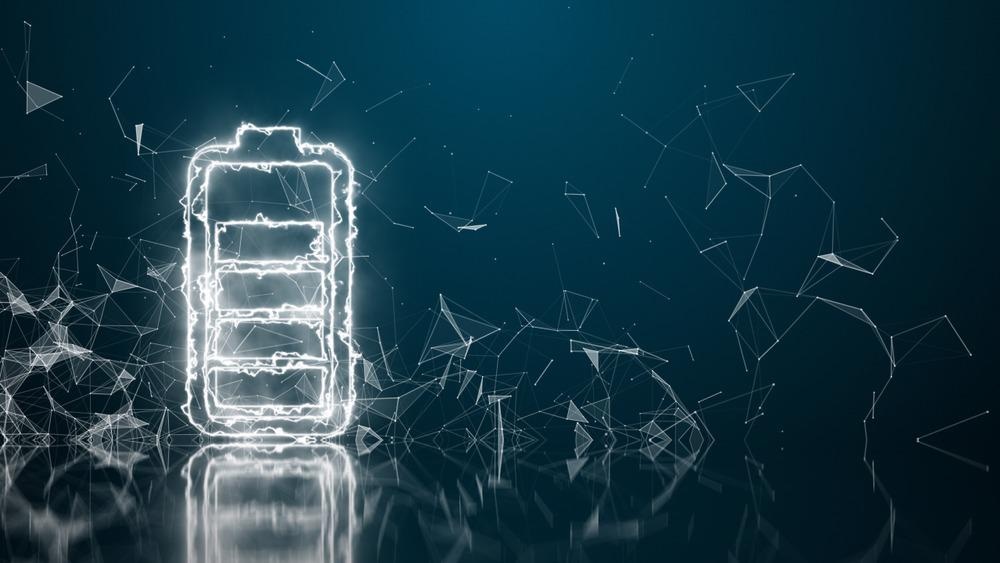The recent article published by researchers from China in Nano Today focuses on the development of a novel technique in which graphdiyne oxide (GDYO) is utilized to enhance the Zn anode (Zn-GDYO) in order to create a Zn-GDYO/ZnVO cell with exceptionally prolonged cyclic stability.

Study: Graphdiyne oxide for aqueous zinc ion full battery with ultra-long cycling stability. Image Credit: Immersion Imagery/Shutterstock.com
Why Zinc Ion Batteries are Important?
Owing to their exceptionally high theoretical capacity, lower reduction potential, plentiful supply, cost efficiency, lesser emissions, and inherent safety characteristics, reusable aqueous Zn ion batteries (ZIBs) using Zn metal as anode have piqued the interest of scientists. Experts have regularly investigated and modified the electromechanical characteristics of ZIB electrode materials particularly cathode substances in recent years.
These adaptable battery packs could be used in a wide range of wearable technology devices, including fitness trackers as well as diagnostic implants. A strong, stable, and sustainable quasi-solid-state zinc-ion battery using a new 2D layered zinc orthovanadate array was also published recently. In addition, a self-charging system incorporating robust ZIBs and photovoltaic panels has been effectively fabricated for long-term energy storage using these batteries.
Problems Associated with ZIBs
The critical hurdles of ZIBs, however, are the poor cyclic durability and inferior Coulombic efficiency (CE), which are mostly caused by non-negligible flaws in the Zn metal anode.
The electrolytes of ZIBs that have been enlarged from alkaline to mild acidic significantly minimize the secondary reactions of Zn metal, but there are still a number of scientific difficulties to be resolved, such as rusting, contact resistance, and dendritic development. Zinc corrosion occurs when exposed to hydro electrolytes, and hydrogen evolution processes compete with the zinc plating/stripping mechanism or couple to generate local currents, resulting in excessive metal zinc consumption.
Methods for Improving Anodic Conditions in ZIBs
Numerous attempts have been devoted to overcoming the difficulties raised above and prolonging the life of Zn anodes through research focusing on framework modification design, surface functionalization, electrolyte refinement, separator configuration, and anodization technique. Surface modification is a straightforward and effective way for improving the electrochemical characteristics of the Zn anode in ZIBs. This technique involves the external protective coating acting as an inactive natural wall or chemical rust inhibitor to avoid direct interaction of the Zn anode with the solution, full delay of complex secondary processes, and eventually an enhancement in Zn anode redox potential.
Importance of Graphdiyne Oxide
The production of aqueous oxygen-containing functional groups in graphdiyne oxide (GDYO) makes it a potential descendant of graphdiyne (GDY) for commercial applications in aqueous solutions. Hydrophilic GDYO may form strong covalent bonds with Zn2+ ions. Furthermore, GDYO preserves the stability of the GDY skeletal framework. As a result, by managing Zn coating initiation and development, GDYO is a potential Zn anode surface engineering compound for entirely resolving the problem associated with it.
Research Findings
The superficial and cross-sectional SEM micrographs of Zn-GDYO revealed that the GDYO covering was evenly and firmly coated on the exterior of the Zinc foil with a thickness of approximately 1 µm. The polarisation of the symmetrically balanced cells with Zn-GDYO anodes is substantially lower than that of the untouched Zinc.
Asymmetrical ZnGDYO/Zn-GDYO cells displayed minimal polarisation and long cycle life. At an even larger flux density, the same findings might be obtained. Amazingly, an averaged CE of 97 percent is recorded in the Zn-GDYO/Ti cell at 0.1 mA cm-2 for 1000 cycles, whereas the Zn/Ti cell shorts out at the 50th cycle, revealing low specificity and reproducibility of the unexposed Zn anode. The results showed that the GDYO thin layer can operate as a barrier to protect Zn metal from corrosion.
Future of Zinc Ion Batteries
When combined with their serviceability, zinc-ion batteries will be able to offer significantly cheaper inventory costs than lithium-ion batteries do currently, and could become a financially viable alternative.
In conclusion, the researchers devised a unique technique for chemical modifications of GDYO on Zn foil surface, which considerably increases the plating/ stripping durability of Zn metal anodes due to GDYO's porous structure, outstanding wettability, and strong coordination effect with Zn2+ ions. The research strengthens the argument for using Zn anodes in safe and environmentally acceptable aqueous ZIBs, paving the door for the further fabrication of powerful, effective, and reliable aqueous batteries.
Reference
Wang, F. et al., (2022) Graphdiyne oxide for aqueous zinc ion full battery with ultra-long cycling stability. Nano Today. 44. 101463. ISSN 1748-0132. Available at: https://www.sciencedirect.com/science/article/pii/S1748013222000901
Disclaimer: The views expressed here are those of the author expressed in their private capacity and do not necessarily represent the views of AZoM.com Limited T/A AZoNetwork the owner and operator of this website. This disclaimer forms part of the Terms and conditions of use of this website.